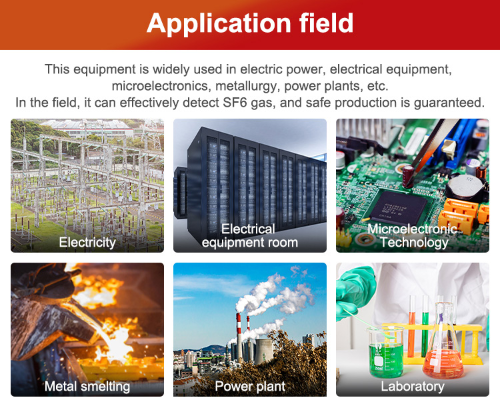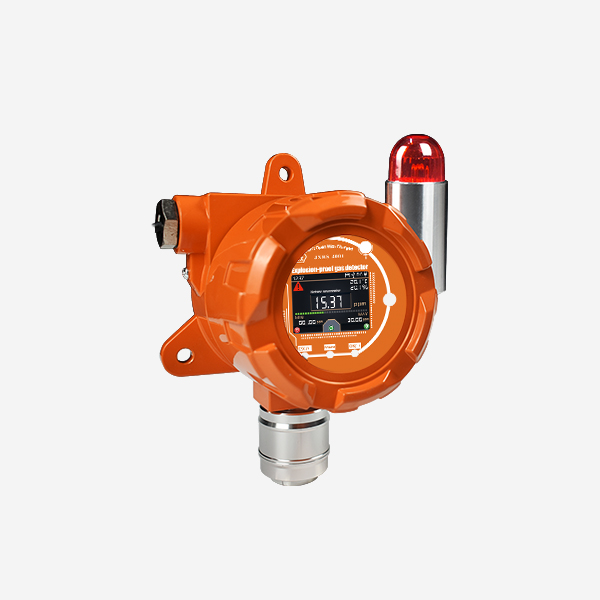Fixed gas detector are critical components of industrial safety systems, serving as frontline guardians against the threat of hazardous gas leaks in various work environments. These devices play a pivotal role in continuously monitoring the presence of toxic and combustible gases, providing early warning alerts, and safeguarding the well-being of personnel, assets, and the environment. This article delves into the significance of fixed gas detectors as essential components of industrial safety infrastructure, emphasizing their role in mitigating gas-related risks, ensuring regulatory compliance, and fostering a culture of safety in industrial settings.
Understanding Fixed Gas Detectors

Fixed gas detector, also known as gas detection systems, are stationary devices designed to detect and alert personnel to the presence of hazardous gases in industrial facilities, manufacturing plants, refineries, laboratories. These detectors utilize various sensing technologies to monitor the air for the presence of specific gases, such as carbon monoxide, hydrogen sulfide, methane, ammonia, and volatile organic compounds (VOCs), among others.
Functionality and Features of Fixed Gas Detectors
- Gas Sensing Technologies: Fixed gas detectors employ diverse sensing technologies, including electrochemical sensors, catalytic bead sensors, infrared sensors, and photoionization detectors, to detect a wide range of hazardous gases with high sensitivity and accuracy.
- Continuous Monitoring: These detectors are designed for continuous, round-the-clock monitoring of gas concentrations, providing real-time data on gas levels and triggering alarms when gas concentrations exceed pre-set safety thresholds.
- Alarm Systems: Fixed gas detectors are equipped with audible and visual alarms, as well as remote notification capabilities, to alert personnel to the presence of hazardous gases, enabling rapid evacuation and emergency response in the event of a gas leak.
- Data Logging and Connectivity: Many fixed gas detectors feature data logging capabilities, allowing for the storage of gas concentration data over time. They may also offer connectivity options for remote monitoring and integration with centralized control systems.
- Maintenance and Calibration: Proper maintenance and periodic calibration are essential for ensuring the accuracy and reliability of fixed gas detectors. Some advanced systems feature self-diagnostic functions and automated calibration processes to streamline maintenance procedures.
Applications of Fixed Gas Detectors

- Industrial Safety and Occupational Health: Fixed gas detectors are instrumental in protecting workers from exposure to toxic and combustible gases, helping to prevent accidents, injuries, and long-term health effects associated with gas exposure.
- Environmental Protection: These detectors contribute to environmental protection by preventing gas leaks and emissions, minimizing the impact of hazardous gases on air quality, soil, and water resources.
- Regulatory Compliance: Compliance with occupational health and safety regulations, as well as environmental standards, is facilitated by the use of fixed gas detectors, which help organizations meet legal requirements and industry guidelines for gas monitoring and safety.
- Asset Protection: Fixed gas detectors play a role in safeguarding valuable assets, equipment, and infrastructure from the potential damage caused by gas-related incidents, such as fires, explosions, and corrosion.
Benefits of Fixed Gas Detectors in Industrial Safety

- Early Hazard Detection: Fixed gas detectors provide early warning of gas leaks, enabling prompt response measures to be initiated before gas concentrations reach dangerous levels, thus preventing potential accidents and minimizing risks.
- Worker Safety: By continuously monitoring the work environment for hazardous gases, fixed gas detectors help create a safe and healthy workplace, reducing the risk of gas-related illnesses, injuries, and fatalities among personnel.
- Risk Mitigation: These detectors aid in identifying and mitigating potential gas-related risks, allowing organizations to proactively manage gas hazards and implement preventive measures to enhance workplace safety.
- Emergency Preparedness: The alarm systems of fixed gas detectors facilitate rapid evacuation and emergency response in the event of a gas leak, ensuring that personnel are promptly alerted and enabling timely intervention to mitigate the impact of gas incidents.
Challenges and Future Developments
While fixed gas detectors offer significant safety benefits, challenges such as sensor drift, false alarms, and maintenance requirements remain pertinent. Future developments in fixed gas detection technology are expected to focus on enhancing sensor reliability, improving data analytics capabilities, and integrating advanced features, such as artificial intelligence and predictive maintenance algorithms, to optimize system performance and reduce operational costs.
Conclusion
Fixed gas detector are indispensable tools for ensuring industrial safety, protecting personnel, assets, and the environment from the hazards of toxic and combustible gases. Their role in early hazard detection, risk mitigation, and emergency preparedness is paramount in fostering a culture of safety and compliance with regulatory standards. As organizations continue to prioritize workplace safety and environmental stewardship, fixed gas detectors will remain essential components of industrial safety infrastructure, contributing to a safer, healthier, and more sustainable work environment for all.
